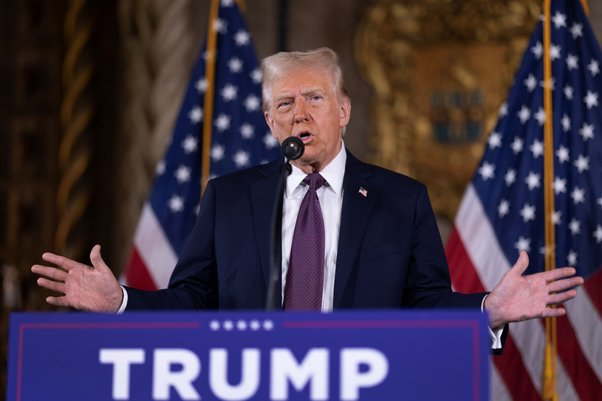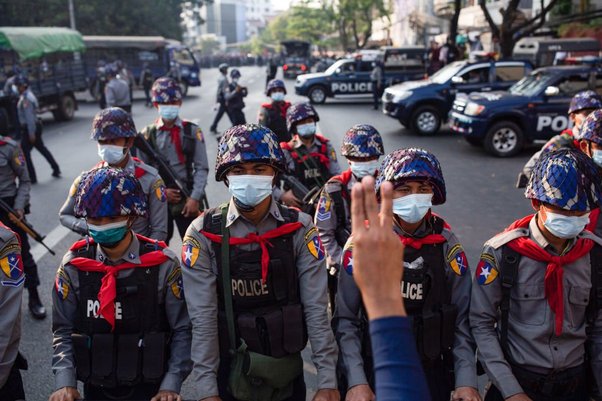Between 2021 and 2023, nearly 90% of violence and protests happened in emerging economies, while up to 81% of mining is by companies from wealthier and major consumer countries.
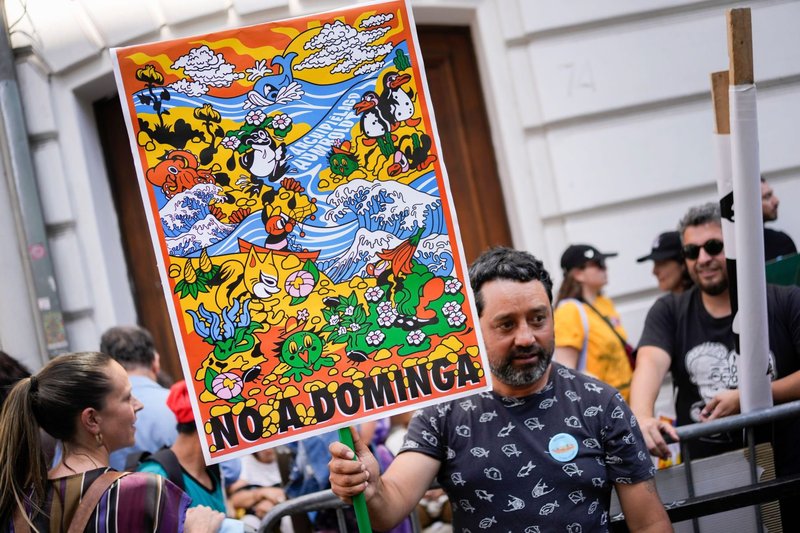
The energy transition has a mining problem. Demand for transition minerals is rising rapidly as we need more and more minerals for renewable technologies.
But mining for these metals to build the batteries, wind turbines, solar panels and electric grids necessary to get off fossil fuels is causing untold social and environmental harms and sparking social unrest from Indonesia to Peru and Serbia.
Between 2021 and 2023 alone, there were 334 incidents of violence or protest linked to mining copper, cobalt, lithium and nickel in the top 10 producing countries.
These incidents are explored in a new Global Witness analysis of data from the Armed Conflict Location & Event Data Project (ACLED), which collects political violence and protest reports.
This unrest is likely to get worse. Production of all four metals – or “transition minerals” – is forecast to spike as countries seek to meet their climate goals.
Globally, between 2021 and 2028 copper mining is forecast to increase by over 25%, cobalt over 100%, lithium over 300% and nickel over 75%, according to our analysis of S&P Global data.
Our analysis shows that the burdens of mining fall overwhelmingly on less wealthy producing countries – those with emerging and developing economies – which experienced nearly 90% of protest and violence events.
However, most profits from mining and processing transition minerals are going elsewhere. Between 71% and 81% of mining production is controlled by companies from countries with advanced economies and major consumer countries, according to our analysis of S&P data.
Global Witness, in partnership with L’Observatoire Africain des Ressources Naturelles (AFREWATCH) and Jaringan Advokasi Tambang (JATAM), have produced an interactive tool showing how much production is set to increase, the nationalities of mining companies, the locations of active mines, and ACLED events taking place in the top 10 countries producing the four key transition minerals.
This tool can be found at globalwitness.org/TMmap.
The fight against the climate emergency cannot come at the expense of people in lower-income countries.
The climate crisis is already rife with inequalities, with communities with less economic means often suffering the brunt of extreme weather and damaged infrastructure. We must not pass challenges from the energy transition onto them too.
The world will be a less stable, less just place if transition mineral mining further increases inequality between the world’s poorer and wealthier countries.
It will also be increasingly hard to build the electric grids necessary to decarbonise our economies if protests at copper mines destabilise supply chains.
And the batteries needed for new electric buses and trains may become prohibitively expensive if riots in nickel-producing countries cause price spikes.
If the energy transition is to succeed at ensuring our planet’s future, transition mineral mining must be equitable and sustainable for all.
The need for transition minerals
The world needs transition minerals. The climate emergency requires a rapid switch from fossil fuels to renewables-based electricity-powered industry, construction and transport.
New infrastructure requires materials, particularly a group of minerals that includes chromium, cobalt, copper, graphite, lithium, manganese, molybdenum, nickel, zinc and rare earth minerals.
Our study focuses on four of these minerals: copper, cobalt, lithium and nickel. None of the four are used exclusively in energy transition technologies, but all are critical to those technologies, and it is the energy transition that is a key driver of future demand.
Lithium, nickel and cobalt are key components of batteries used in electric cars and other forms of transportation, along with batteries used for electricity grid storage.
Copper is used in a range of electricity technologies, including transportation grids.
We also selected these four minerals for practical reasons: they are the four for which country-level future production forecasts were available from leading commodities data provider S&P Global.
The International Energy Agency (IEA), an inter-governmental organisation that produces energy sector analyses, estimates that demand for these minerals will jump drastically if the world is to stop temperature rises above 1.5°C.
By 2040, copper demand will increase by half, cobalt and nickel will double, while lithium will increase nine-fold.
The IEA’s demand forecasts differ from the production forecasts contained in this brief, which have been drawn from data from S&P Global and used because they provide country-level data.
This is partly because the two cover different periods and because the IEA and S&P use different methodologies. Even with these differences, both show large increases in transition mineral mining in the coming years.
The evidence shows, however, that such big jumps in transition mineral mining are neither sustainable nor necessary.
Violence and protests are widespread and occur mostly in less wealthy countries
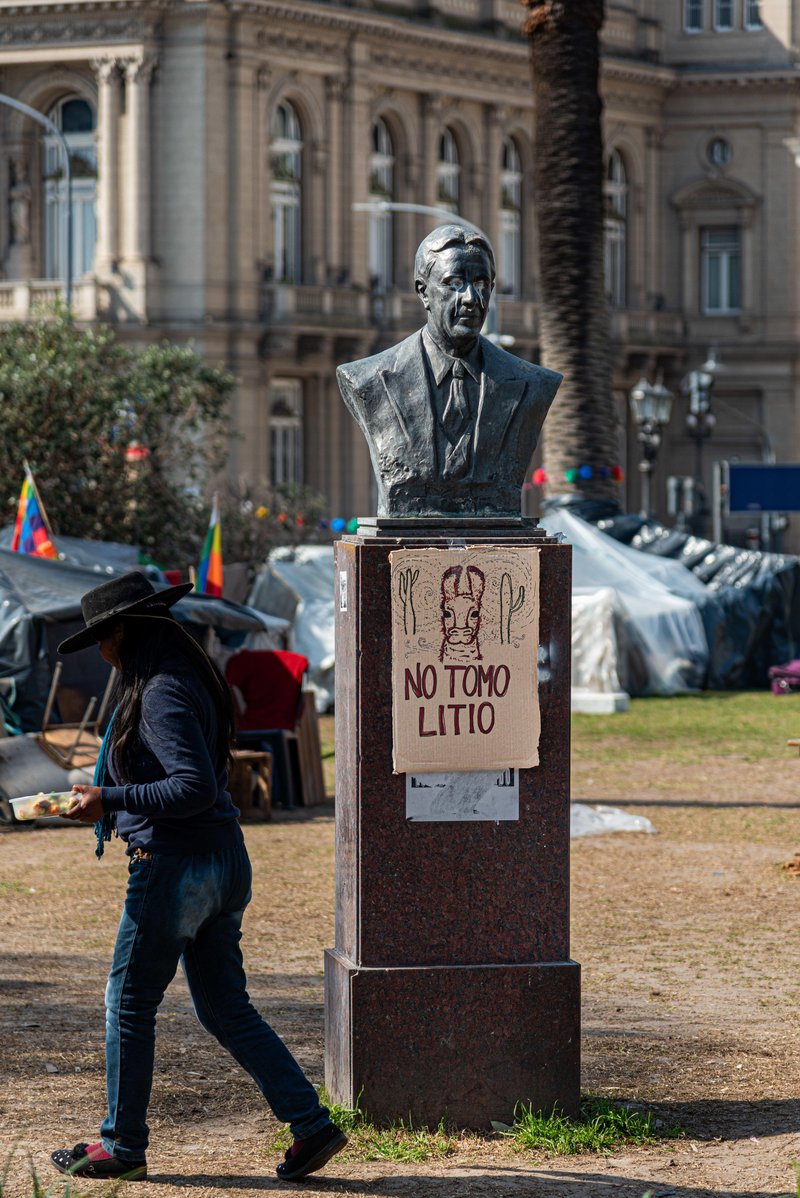
Media outlets worldwide regularly report on problems with mining for transition minerals.
Global Witness has published evidence showing how lithium risks fuelling corruption in African countries and that rare earth mining has devastating health and environmental impacts in Myanmar.
We also report on the killing of land and environmental defenders worldwide every year, and in 2023 the main driver for these killings was mining – with the extractives sector linked to at least 25 cases.
Other civil society groups have produced useful tools that can be used for tracking mining-related incidents, including the Observatory of Mining Conflicts in Latin America, the Business and Human Rights Resource Centre’s Transition Minerals Tracker and the Global Atlas of Environmental Justice.
But new Global Witness analysis, using data from S&P Global and ACLED, shows that violence and protests are widespread in the countries where most transition minerals are mined.
These are overwhelmingly in countries with emerging and developing economies, as classified by the International Monetary Fund.
Our study focuses on each of the top 10 countries mining for copper, cobalt, lithium and nickel in 2024, analysing S&P Global data. In total, the analysis covers 19 countries as some are large producers of multiple minerals.
This focus allows us to be consistent when identifying where mining may be having the most impact on violence and protests, but will omit significant events in countries with less production, like copper protests in Panama or Serbian lithium protests.
For each of the 19 countries, we analysed the database produced by ACLED, which records political violence and protest events worldwide.
From this database, we identified events that involved one of the four transition minerals and were either caused by a mining operation, involved miners, or were focused on a mineral-specific government policy. Our full methodology is at the end of this brief.
In total, between 2021 and 2023, mining for lithium, nickel, cobalt or copper was linked to 334 violence or protest events across the 19 countries listed above – an average of 111 per year.
Each of these events is an individual story. Each involves people. They include deadly clashes between protestors and soldiers, protest marches and artisanal miners angry about working conditions.
Many show how communities are rightly speaking up about problems in nearby mines, including communities who have lost their land or people who want to protect the environment.
Detail on these events and the people involved can be found in our interactive tool and below in this brief.
A review of the identified events shows that the unrest recorded by ACLED may be widespread, but it is not evenly spread.
In Peru, Global Witness identified 107 ACLED events, 98 in Indonesia and 35 in Chile. Several countries, like Australia, Russia, South Africa and Zimbabwe, only had one or two events.
Overall, there was at least one event in 16 of the 19 countries covered, but no events identified for Brazil, China or Cuba.
Similarly, there are differences in the number of events reported for each mineral.
Copper mining was linked to 213 reports, followed by 88 for nickel and 33 for lithium. Cobalt mining was linked to only 13 events and some events were associated with more than one mineral.
Can we compare countries or minerals?
Variations in the events we have identified show that they should not be used to compare problems between specific countries or minerals.
While the world’s largest nickel producer – Indonesia – may have a large number of events, the third largest producer – Russia – has none.
And it is unlikely that only the Democratic Republic of Congo (DRC) has experienced events relating to cobalt, but the only ACLED events we could certainly link to cobalt were in DRC.
To retain the integrity of ACLED’s reporting, we have not tried to explain variations in numbers.
In some cases, people may generally be happy with mining. In others, a lack of transparency surrounding mining operations may mean communities, civil society groups or the media are not aware of problems.
Reports may also vary because there is less media interest in some countries than others.
Particularly important, however, are the power imbalances that may result in less reporting for some countries.
Communities, civil society groups or the media might not be able to report problems because they fear for their safety or are controlled by the state.
For more information about freedom of speech and civil society in countries included in this analysis, see the monitor produced by the CIVICUS network.
Uneven as the spread of these violence and protest events may be, they do show a critical trend: it is less wealthy countries that are bearing the brunt of social unrest linked to transition mineral mining.
Nearly 90% of the violence and protest events – 296 of the 334 – occurred in countries the IMF classifies as emerging and developing.
Protests and violent incidents linked to transition minerals
Copper
We have identified 213 events in ACLED’s records linked to copper mining. These events were spread across nine of the top 10 countries producing copper, although there were far more in Chile, Indonesia and Peru than in Australia, Russia and the US.
In the US, ACLED records show protests against a proposed mine that members of the San Carlos Apache Tribe say would desecrate their sacred lands.
In Zambia, which is part of Africa’s copperbelt, mine workers have been arrested after taking to the streets, demonstrating against what they say are bad working conditions and late wage payments.
And in Peru, the world’s third largest copper producer, there were 107 events linked to copper.
Communities in Cusco province entered a mine site saying their water had been contaminated and on another occasion clashed with police after blocking mining roads.
In Arequipa province, local residents have also blocked a major route – the Pan-American Highway – due to anger over water rights given to a copper mine.
It is likely that current problems will get worse, with worldwide copper production forecast to jump by 26% between 2021 and 2028, according to Global Witness analysis of S&P Global data.
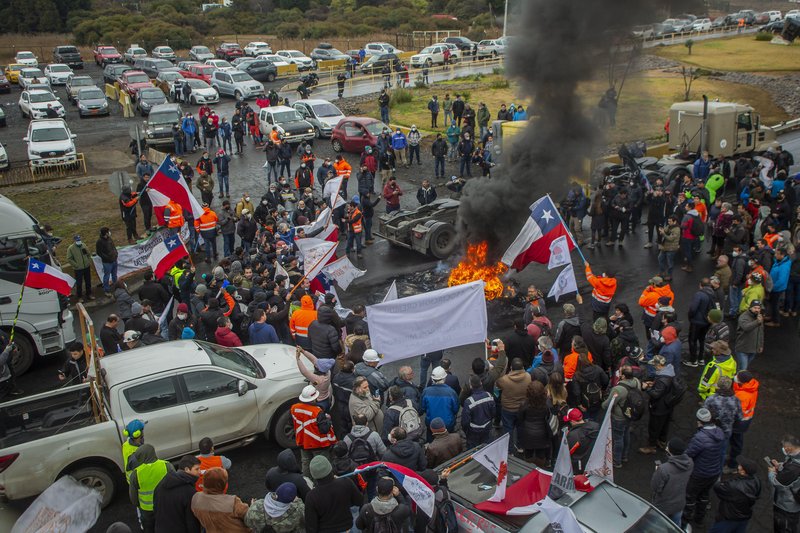
Cobalt
There are 13 events in ACLED’s records linked to cobalt production, which is often mined at the same time as copper or nickel. Production is forecast to increase by 108% between 2021 and 2028.
All of the events identified happened in DRC, which is the largest cobalt producer in the world.
In 2021, mines in Lualaba province were the site of fighting between the DRC military and police. In September 2023, again in Lualaba, community members were killed while protesting about local mine operations.
AFREWATCH: Exploitation of transition minerals in the DRC
L’Observatoire Africain des Ressources Naturelles or African Resources Watch (AFREWATCH) was created in 2013 in Lubumbashi in the Haut-Katanga province in the Democratic Republic of Congo (DRC) where it has its headquarters.
AFREWATCH is an NGO that campaigns for a fair and equitable exploitation of natural resources in Africa, by holding states and companies accountable.
AFREWATCH operates in the natural resources sector, in particular: mines, hydrocarbons and water, and in a cross-cutting manner on issues of the environment, mining crafts, energy transition and climate change, electricity management, and respect for human rights in mining sites.
The DRC is ranked among the most important countries producing transition minerals.
The DRC has half of the world's cobalt reserves, has significant lithium reserves and is considered the leader in coltan production.
The wealth of its natural resources contrasts with the poverty of its inhabitants.
While mining development is presented as the lever of economic development with exports reaching a value of over 85%, the socio-economic and environmental challenges facing mining areas are highlighted by rapid population growth with the resulting problems such as inflation, social inequalities and dependence on mining activities.
Congolese populations are victims of human rights violations linked to environmental damage due to mining, relocations without compensation and the lack of added value since the raw minerals produced are exported.
The DRC is among the countries most vulnerable to climate change.
Mining poses problems in many provinces of the DRC: Haut-Katanga, Lualaba, Tanganyika, South and North Kivu, Ituri and Haut-Uele.
In Kolwezi, Lualaba province, mining operations installed upstream of the localities of Kapepa, Pierre Muteba and Tshabula discharge toxic water emanating from basins, which flood not only the houses located 30-40 meters from one side to the other of these villages but also the water wells used for drinking.
These polluted waters are discharged especially during the rainy season. The strong smells of acids and fumes, as well as the dust whipped by the winds, are the basis of several diseases, the most frequent of which are: skin rashes with sores, hardening of the skin following itching, chronic coughs, diarrhoea or colic, nosebleeds.
Other residents of Kolwezi have been relocated by a mining company to the localities of Kabombwa and Manomapia.
The dumping of acids into the rivers that the community uses for drinking water, washing and watering vegetable gardens has caused several diseases including skin rashes, cases of abortions among women, vaginal infections, body swellings, respiratory complications, congenital wounds; cases of deaths that the company and the authorities dispute, have been recorded.
The relocated riverside communities say they have "lost everything, we live in precarious socio-economic conditions, without any of our previous security."
The scale of mining investments also hides the opacity of mining sector governance.
This is the case of the “minerals for infrastructure” contract between the DRC and China in 2008, an amendment to which was signed in 2024, bringing the investment to $7 billion compared to $3 billion in the initial agreement.
The agreement benefits from a total exemption from indirect or direct taxes, duties, customs and royalties until 2040.
The management of natural resources in the DRC is governed by a legal and regulatory framework covering land, mining, forestry, environmental, agricultural, hydraulic and even energy regimes that are disharmonious because the coexistence of these legal regimes in competition in the same space creates conflicts of jurisdiction between the institutions to which they respond.
The exploitation of natural mineral resources is subject to differentiated problems: management of said resources and income, an improvable and lax institutional framework, corruption, impact on the environment and the way of life of communities.
CSOs call on the government, within the framework of bilateral and multilateral cooperation with producing and consuming countries, to ensure the governance of its mining economy in order to support industrialisation based on the local processing of its strategic minerals, thus strengthening its role in the supply chain of these minerals.
We also call on the government and its partners to strengthen their capacity to implement controls and enforce mining legislation standards.
This must include measures to end air, water and soil pollution, the drying up of rivers and water sources, and noise and vibrations generated by the use of explosives near homes.
And people must not be displaced without consideration for the daily needs of communities affected by mining activities.
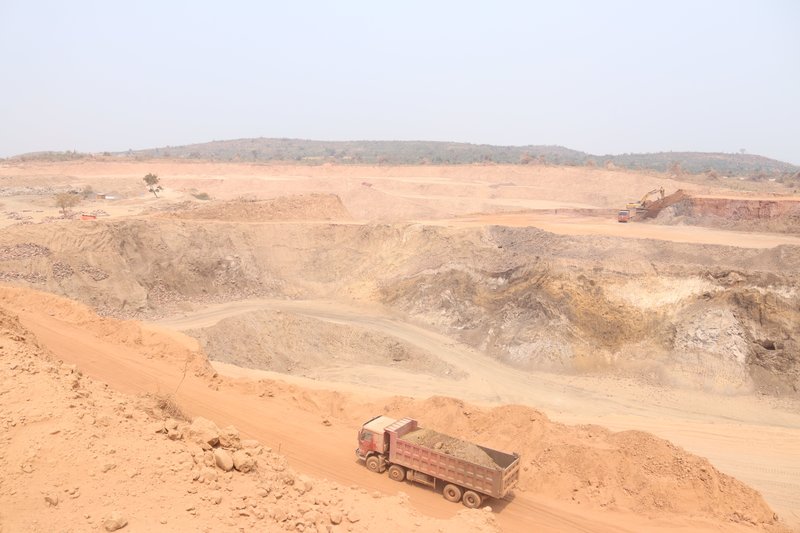
Lithium
Lithium mining was linked to 34 events identified within ACLED’s records. These occurred in seven of the top 10 lithium-producing countries.
Global lithium production is forecast to increase 321% between 2021 and 2028, according to our analysis of S&P data.
In Argentina, ACLED records show a series of protests in Jujuy province against legislative reforms that are considered to encourage lithium mining at the expense of Indigenous Peoples.
In June 2023, police clashed with demonstrators, resulting in multiple injuries and arrests.
Despite already being a top lithium producer, Argentina’s production is set to spike 925% between 2021 and 2028.
Proposed lithium mines in Portugal have also resulted in protests, with demonstrators fearing mines would cause environmental damage, including using up already scarce water.
In October 2021, activists were even joined by local government officials who oppose the new mines.
And in 2022, in Zimbabwe’s Midlands province, police fired tear gas at artisanal miners angry about their working conditions in a lithium mine. It is not known if anyone was hurt.
Nickel
There were 88 violence and protest events linked to nickel mining, concentrated in five of the top 10 producers. Nickel production worldwide is forecast to increase by 76% between 2021 and 2028.
ACLED contains 13 events related to nickel in the Philippines.
These include 2023 protests in the Mimaropa region, where communities opposed to a mining project blockaded mines, leading on one occasion to confrontations with police, and on another to a fight with private security guards, leaving several people injured.
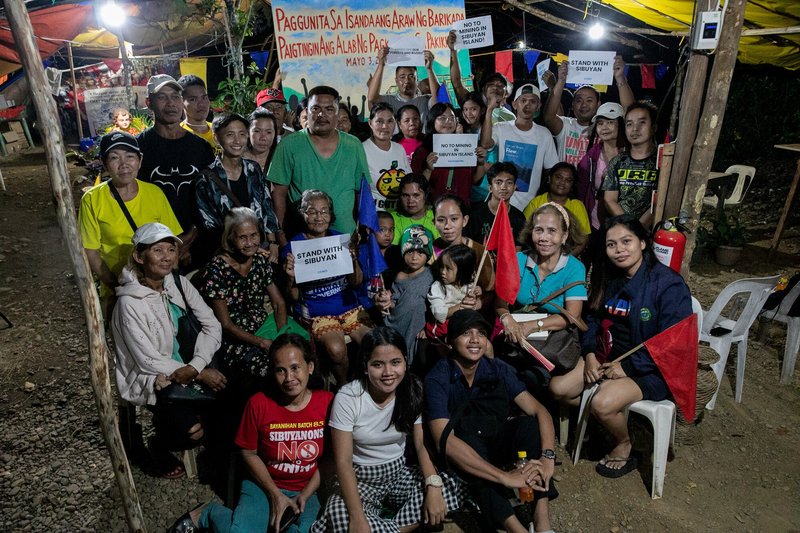
In Indonesia, there were 62 ACLED events linked to nickel production. The country is also a major cobalt and copper producer, and there were 36 ACLED events linked to copper production.
JATAM: Indonesian energy politics and the irony of energy transition for investment
Jaringan Advokasi Tambang or the Mining Advocacy Network (JATAM) is a network of non-governmental organisations and community-based organisations working on issues concerning human rights, gender, the environment, Indigenous People and social justice in relation to mining.
JATAM's goals are to support Indonesian communities, especially Indigenous communities, against the dehumanisation and environmental destruction caused by the invasion of the mining.
JATAM's activities are conducted with the purpose of the establishment of rights for all Indonesians to live in a healthy, productive, happy and most of all sustainable environment.
The Indonesian government has responded to the global energy transition by implementing a series of measures described as clean, green and sustainable.
However, instead of phasing out fossil fuels, which are intrinsically linked to environmental destruction and the displacement of communities, the Indonesian government has promoted numerous extractive policies that continue to depend on fossil fuels.
This situation is deeply rooted in Indonesia's patronage political system, characterised by a symbiotic relationship among politicians, public officials and entrepreneurs in the extractive sector.
Mining entrepreneurs include several high-ranking ministerial officials, leaders of state military and security institutions, and members of the people's council.
The intertwining of patronage and trading of influence in the political system has resulted in the passage of laws that favour the extractive industry, such as the Job Creation Law and the modification of the Mineral and Coal Law.
Both regulations give the government more legitimacy and authority to issue mineral and coal mining permits, while also silencing communities on the ground with the threat of criminal sanctions under Article 162 of the Mineral and Coal Law No. 3 of 2020.
Nonetheless, Indonesia has a number of restrictions in order silencing communities.
In 2024, JATAM has advocated for the victims of eight mining conflicts, with up to 40 people persecuted through criminal threats.
They were persecuted under several laws and articles, including the crimes of sedition, defamation and criminal violence against authorities, none of which were committed.
Current energy policies, legitimised by these laws, offer various incentives to the mineral and coal industries.
For example, a royalty-free incentive for businesses actually boosts the added value of coal.
In fact, royalties are a component of state earnings that will be dispersed to regions through the profit sharing fund (DBH) system.
This strategy demonstrates that the Indonesian government is not serious about stopping the exploitation of mineral and coal resources in order to implement a truly sustainable energy transition.
The seizure of community land will undoubtedly increase in the future.
For example, President Jokowi's request to shorten the procedure of handling geothermal operating permits was quickly supported by Minister of Energy and Mineral Resources Bahlil Lahadalia, who promised to shorten the license process and duration, which were deemed too long and made investment impossible.
Both statements led to violence by state security forces against the Poco Leok community as they attempted to defend their land from geothermal mining.
In addition to issuing a law that removes geothermal from the list of mining activities and instead classifies it as an environmental service, the government is drafting an article that criminalises people who obstruct or impede geothermal operations, with a seven-year prison sentence and a fine of IDR 70 billion.
Instead of achieving a just energy transition, Indonesia's energy politics view the energy transition solely as an opportunity to substitute one energy source for another and thus increase power.
For example, the National Long-Term Development Plan (RPJPN) 2025-2045, also known as the Vision of Golden Indonesia 2045, wraps the energy transformation agenda in a narrative of a low-carbon economic transition, with nickel downstreaming for electric vehicles, accelerating geothermal utilisation, utilising rare earth metals, and various other key (critical) mineral downstreaming, as well as targeting the completion of nuclear utilisation policy infrastructure for energy by 2029.
Under the ruse of meeting electricity demands, the government has allowed the use of technology to produce "clean coal", such as coal gasification, as well as coal processing into derivative products labelled as "clean", such as green hydrogen, clean Dimethyl Ether (DME), Synthetic Natural Gas (SNG), clean ammonia and other derivatives.
Furthermore, the government is attempting to expand the usage of coal for electricity generation through a biomass co-firing program in certain aged PLTUs.
Almost all megaprojects requiring large investments in the procurement of such technologies are given special status under the National Strategic Project (PSN).
As a result the state appears to be offering the biggest potential benefits to tycoons that control Indonesia's energy industry, particularly coal.
Coal corporations are also diversifying their operations to profit from the renewable energy industry, from upstream to downstream.
According to a report from the Global Energy Monitor (GEM) and the Center for Research on Energy and Clean Air (CREA), the number of captive PLTU (coal power plant) installations in Indonesia increased tenfold between 2013 and 2023, from around 1.4 gigawatts in 2013 to 10.8 GW from 117 units in 2023, and is expected to continue to rise.
More than half of the entire installed capacity, 67% or 7.273 GW, is used to power nickel downstreaming.
This demonstrates that energy politics in Indonesia has been narrowed down to the substitution of electrical sources to meet energy needs in the industrial sector alone, disregarding the destruction of communities and the violation of human rights.
Therefore, JATAM urges world leaders, and in particular the Indonesian government, to reform energy policies so that they no longer focus on energy substitution by limiting the amount of production and consumption of fossil energy and critical minerals.
The primary goal of energy policy in the context of the energy transition should be to ensure the protection of human rights, particularly those directly impacted by mineral and coal mining.
Most profits from transition minerals go to wealthier and major consumer countries and their companies
While emerging and developing countries are most exposed to unrest linked to transition minerals, it is companies from wealthier countries and major mineral consuming countries that are capturing most of the profits.
Global Witness analysed S&P data on the ownership of copper, cobalt, lithium and nickel mines producing in 2024, identifying the headquarters for each mine’s largest owner.
This shows that most production is controlled by companies from countries with advanced economies (using IMF classifications) and China, the world’s largest consumer of all four minerals.
It is these companies, based in wealthier countries, to which most of the profits from mining are likely going, not the emerging and developing countries where much of the mining happens.
Worldwide, 71% of copper, 81% of cobalt and 80% of lithium comes from mines controlled by companies from wealthier and major consumer countries. Global estimates for nickel were not possible – for more information see the methodology section below.
The picture is similar when focusing on countries classified as emerging and developing, where much of the time minerals were produced by companies from advanced and consumer countries: 100% of lithium in Argentina, 71% of copper in Chile and 86% of cobalt in DRC.
Some producing countries did buck this trend. In Chile, 76% of lithium production was by Chilean companies.
All of Indonesia’s copper and Russia’s copper, cobalt and nickel was produced by companies from the respective countries.
Detail on the nationalities of mining companies operating in each country can be found in our interactive tool.
It is not just mining profits that are leaving less wealthy countries. Profits gained from processing minerals into the finished technologies needed for the energy transition – copper for grids and cobalt, lithium and nickel for batteries, for example – are heading out too.
Global Witness’ analysis of S&P data shows that by far the largest consumers of all four minerals are China and wealthier countries.
In 2024, China is the largest consumer of all four minerals, taking between 40% and 64% of worldwide production; advanced countries consume most of the rest.
The main outlier is nickel, where Indonesia is the second largest consumer worldwide, taking 12% of production.
These consumption metrics are helpful, although they do not tell the whole story.
EU drivers may be the final buyers of electric cars, but those cars are often made in China and South Korea. Nickel may be processed in Indonesia – the country is also a major producer – but it is often Chinese companies that manage this activity.
Even with these caveats, a second trend is also clear. As less-wealthy countries bear the brunt of unrest, wealthier and consumer countries – and their companies – are making money out of transition minerals.
It is their companies profiting both from mining and from the finished products – electric vehicles, solar panels, wind turbines – made from these minerals.
This inequality is wrong. History shows what happens when a small number of wealthy countries control the production and consumption of natural resources – particularly minerals – in less powerful places. Fighting the climate emergency cannot be a neo-colonial project.
It is also risky. Social unrest disrupts supply chains and causes price spikes. As of April this year, Peru’s immense Las Bambas copper mine, had lost more than 600 days of work since it opened in 2016. The mine is owned by China’s MMG and could – if operating normally – produce 2% of the world’s copper.
Also this year, riots in New Caledonia, which were sparked by constitutional changes but fuelled by discontent over the health of the nickel industry, caused nickel prices to soar.
Perhaps paradoxically, these risks are likely to increase as production increases. As new mines come online, many of the issues currently causing unrest – land and water disputes, environmental protests – will likely multiply.
Unless there is rapid and immediate reform, countries and companies banking on a 300% rise in lithium production or 100% rise in nickel should also count on an equivalent, possibly destabilising, rise in social unrest in producing countries.

Recommended solutions to reform transition mineral mining
To fight the climate emergency, to obtain the transition minerals we need for technology that replaces fossil fuels, and ultimately to do the right thing, reform is necessary.
1. Countries that consume the most must consume less
This is possible, while still meeting our climate goals, if we reduce consumption and embrace a circular economy.
Rather than building everyone an electric car, we can share electrified public transportation. Rather than discarding windmills or solar panels, they should be built to be repaired and upgraded.
Where remanufacturing is not possible, products must be designed so minerals can be recycled.
This is not idealistic; it can be done.
A recent study from the Climate & Community Institute and University of California Davis shows that a combination of public transportation, reduced battery sizes and recycling could cut US lithium demand by up to 92% compared to the most lithium-intensive energy transition scenarios.
And governments already have the models to put these initiatives into action, such as the European Union’s Waste Framework Directive.
2. Consumer countries should enforce, and their mining companies should adhere to, human rights and environmental standards
Consumer countries and those where mining companies are headquartered have a responsibility to ensure the mining that does happen does not harm the environment or the rights of affected people.
This includes a responsibility to protect, and create, an enabling environment for people who protest against mining projects – land and environmental defenders – by implementing requirements contained in the UN Declaration on Human Rights Defenders.
To do this, major consumer countries and countries where companies are headquartered should require mining companies, importing companies and their financiers to undertake mandatory due diligence.
This includes adopting and applying the OECD’s Due Diligence Guidance for Responsible Supply Chains of Minerals from Conflict-Affected and High-Risk Areas (OECD Guidance), the OECD Guidelines for Multinational Enterprises on Responsible Business Conduct and the UN Guiding Principles on Business and Human Rights.
Countries should establish or enhance binding regulations (similar to the EU’s Corporate Sustainability Due Diligence Directive) that require importing and mining companies to monitor and meet stringent environmental and human rights due diligence standards, including protecting the rights of defenders, across the entire mineral supply chain.
This should include stock exchange reporting requirements on specific risks and impacts of mining operations to these supply chains.
In China, the China Chamber of Commerce, Metals, Minerals & Chemicals Importers and Exporters (CCCMC) has developed voluntary Mineral Due Diligence Guidelines for companies importing minerals.
However, China should establish a mandatory responsible mineral sourcing law and regulations for importers, and proposed amendments to the Mineral Resource Law should contain supply chain due diligence requirements for companies.
The Chinese government also currently encourages companies to follow Chinese and international standards when local regulations are absent. It is recommended that this requirement become mandatory and enforced.
The government should ensure the effectiveness of the newly-established Mediation and Consultation Mechanism.
At the same time, financial institutions that invest in mining should be required to integrate environmental and social governance criteria into their risk assessments, due diligence and decision-making processes when financing overseas mining projects.
These disclosures should be made public, including performance details for funded projects.
When negotiating or amending trade agreements with producer countries, consumer countries should ensure human rights and environmental protections are embedded as non-negotiable clauses.
Preferential trade terms should also be offered to countries and companies that adhere to these standards.
As memoranda of understanding and other non-binding trade agreements become more popular, these should be fully transparent, and community consultation and involvement should be mandatory. Producer countries should be able to nullify agreements when other parties fail to meet their obligations.
Any infrastructure to support extractives projects that is built with the help of consumer countries or their companies should remain the property of the producing state or the community, not foreign entities. Loans, aid or financial agreements should not use minerals or infrastructure as collateral.
And the benefits of mined minerals, including true value addition, should be shared by both consumer and producing countries.
Consumer countries should move away from a model of extracting and creating value outside of producer countries and put measures in place to ensure more of the value and final renewables stay in those countries.
3. Countries producing transition minerals should also ensure human rights and the environment are protected
Countries where mining happens also have a responsibility to protect the environment, workers, the rights of people affected by mining and the defenders who protest against it.
This should include the right to free, prior and informed consent and the right to meaningful public participation during decisions about whether mining should happen.
Indigenous Peoples’ rights to their livelihood and culture should be ensured, along with the right to life, liberty and freedom of expression, and the right to a safe, healthy and sustainable environment.
These are basic human rights, which are already embodied in various laws, including national constitutions.
Laws that protect defenders protesting against mining must also be enforced. Where such laws do not exist, new frameworks must be established. And efforts to use any legislation to criminalise defenders should be declared null and void.
Governments should enforce – or if necessary adopt – adequate anti-corruption laws that ensure flows of finances such as taxes are directed towards communities affected by mining.
Governments should also develop independent grievance mechanisms for communities in producer countries to report and seek remedy for human rights and environmental abuses against companies.
These mechanisms should be accessible to local communities, independent and impartial, and tied to real consequences for companies that fail to act.
And any trade deals signed by producer countries with potential consumer countries must protect human rights and the environment.
Any such deals should not include provisions that allow companies to hold producer countries accountable for production disruptions resulting from protests or other actions taken by communities to protect their rights.
4. Mining companies should reform
Mining companies should, of course, follow all laws of the countries where they operate and where they are headquartered. Companies buying or importing minerals and mining financiers should ensure laws are followed for all minerals in their supply chains.
For the avoidance of doubt, or in instances where national legislation is insufficient, companies should implement robust due diligence procedures that seek to prevent, identify, mitigate and account for human rights and environmental harms throughout their operations.
Company policies must explicitly include protocols for safeguarding the rights of defenders protesting operations and they must swiftly provide remedies where human rights and environmental harms occur.
The principle of free, prior and informed consent of affected communities should be respected, in particular for Indigenous People who are subject to additional protections under international law.
This is stipulated in the UN Declaration on the Rights of Indigenous Peoples, ILO Convention 169 and the UN Voluntary Guidelines on the Responsible Governance of Tenure of Land, Fisheries and Forests.
Companies should also implement a policy of zero-tolerance on reprisals and attacks on defenders protesting against operations, illegal land acquisition and violations of the right of free, prior and informed consent at all levels of business operations, including in their global operations, supply chains and business relationships.
These policies should state who at the senior level will be responsible for legal compliance, as well as how it will be implemented and monitored, and clear red lines for prompt suspension or termination of contracts for non-compliant suppliers.
To help ensure this happens, they should establish complaint mechanisms.
These procedures and how they are being implemented should be published at least once per year.
Following the OECD Due Diligence Guidance for Responsible Business Conduct, companies should suspend or discontinue engagement with suppliers if there is a reasonable risk of serious human rights abuse or conflict finance.
In situations where their operations are already causing serious human rights or environmental harms, companies should immediately halt operations and exit responsibly.
This should include compensating affected communities and returning land to customary landholders and local communities.
5. Countries should also push for new international standards
COP29 in Azerbaijan presents an opportunity for binding commitments on mineral supply chains that respect human rights and the environment.
At the same time, improved standards should be included during negotiations on the UN’s business and human rights treaty. And recommendations presented by the UN Panel on Energy Transition Minerals should be implemented, creating an international binding standard.
Last, the conservative nature of the methodology used to produce our analysis shows the need for better monitoring of the impacts of transition mineral mining.
Producer and consumer countries should work together to ensure the human rights and environmental impacts of transition mineral mining are better monitored and addressed in an internationally-uniform manner.
Methodology and notes: Analysing mineral production trends and violence and protest events
The choice over which minerals to analyse, production rankings, forecasts, consumption percentages and mining company nationalities were all drawn from S&P Global, a leading commodity data provider.
Global Witness focused on copper, cobalt, lithium and nickel because of their centrality to the technologies needed for the energy transition and because longer-term forecasts for these minerals were available using S&P Global Market Intelligence’s August 2024 Commodity Briefing Service (CBS) reports.
Top 10 country producers were determined using 2024 forecast production volumes from CBS reports produced for each mineral. Production increases between 2021 and 2028 used past production volumes and forecast volumes from these reports.
In some instances, S&P forecasts production but does not list the countries in which that production occurs, although these would not rank in the top 10.
Consumer country consumption percentages were determined using 2024’s forecasted consumption volumes from each CBS report.
For copper, S&P provides data on refined consumption. For lithium and cobalt, data is available on demand for use in plug-in electric vehicles. For nickel, data on primary consumption was used.
Where different minerals listed different jurisdictional structures – e.g. Germany for nickel but the EU for cobalt – the jurisdiction listed by S&P has been used.
S&P states that its forecasts are estimates but has not provided an assessment of the level of uncertainty within its production estimates (what it says was produced in the past year) and its forecasts (what it says will be produced in the future).
Global Witness commissioned an independent expert analysis of these estimates and forecasts, comparing S&P’s historical numbers with production volumes published by the US Geological Survey.
This analysis determined that S&P estimates had an uncertainty level of 2% at the global level and 15% at the country level. S&P forecasts looking one year ahead historically differed from its ultimate production estimates by between 4% and 7% at the global level and between 16% and 58% at the country level. For more information, contact Global Witness.
Nationalities of companies producing minerals were determined using data from S&P Global’s Capital IQ Pro platform (CIQ). CIQ provides information on mines for which S&P can collect data. Global Witness analysed only those mines for which CIQ contained estimated production volumes in 2024.
For these mines, we drew upon headquarter location information provided by S&P for the first owner of each mine. Where a mine has additional smaller owners, this ownership information and the nationality of these owners is not included in our analysis. Our analysis also does not include the nationalities of any owners’ shareholders.
CIQ does not contain production data for some mines that are producing minerals, and these mines and their owners’ nationalities are not included in our analysis.
Where this caused significant differences (a 100% difference) between the country-level production volumes in S&P’s CBS forecasts and the aggregated country-level volumes in its CIQ data, Global Witness determined that we were not covering enough mines to estimate the nationality of companies operating in the country.
This was the case with cobalt production in Indonesia and nickel production in Indonesia and the Philippines, which are sufficiently large producers that we also did not estimate company nationality for global nickel production.
Countries economic classifications are based on those used by the IMF in its World Economic Outlook, which we have used because it measures and compares countries’ economic performance.
The IMF classifies countries as having either “advanced” economies or “emerging and developing” economies. This classification does not include New Caledonia or Cuba. The World Bank classifies New Caledonia as “high income,” so it has been included with the “advanced” economies, and classifies Cuba as “upper-middle-income,” so it has been included with “emerging and developing” countries.
The IMF does not classify China as an “advanced” economy. However, as the highest-ranked buyer of all four minerals reviewed with significant influence over the market for these minerals, it has been grouped with wealthy countries as a major consumer country.
Locations of mines included in our online tool were drawn from S&P’s CIQ. All mines listed as “Active” by S&P were included.
Violence and protest event descriptions and location information were drawn from ACLED (“ACLED Codebook, 2024”; Armed Conflict Location & Event Data Project). ACLED’s API was used to extract all events from the 19 countries we examined, downloaded on 23 September 2024.
ACLED reports on “political violence, demonstrations, and select related non-violent developments around the world.” Its full methodology can be found on its website, including its process for reporting events:
“ACLED researchers systematically collect and review the latest reports from selected local, national and international sources, including media, vetted social media accounts, government and NGO reports, and partner organizations. ACLED researchers work to triangulate reports when and where possible, but they do not independently verify events or gather first-hand information on the ground. ACLED’s local partners often verify and collect first hand information. ACLED employs a range of sourcing strategies to ensure the data are timely and reliable.”
Attributions of specific events to a mineral are based on Global Witness research and, beyond what is included in the ACLED event description, are not attributable to ACLED.
Events have been included if they involve one of the four transition minerals, were caused by a mining operation, involved miners or were focused on a mineral-specific government policy.
We filtered events by those that included in the ACLED event description keywords “mines”, “mining” or “mineworkers,” including variations of those words, or events that mentioned specific minerals “copper”, “lithium”, “cobalt”, “nickel”. We removed those events that mentioned land mines (or variations) or that mentioned copper cables (and variations), as well as those where a mineral was part of a name.
In cases where the event was associated with more than one mineral, it has been included in both maps in the data dashboard but counted as a single mine in the analysis.
In cases where a mineral was not specified in the description, Global Witness undertook independent research drawing upon credible publicly available reporting to determine whether one of the four minerals was the dominant mineral produced by that company in that location or that mine.
If it was highly likely that one of the four minerals was dominant, the event was included. If it was unclear whether one of the four minerals was dominant the event was not included.
Global Witness limited the period over which ACLED events were analysed to 2021-2023 in order to parallel the period over which production increase forecasts could be estimated (starting in 2021) and when a full year of event data could be analysed (2023).
-
Critical mineral mines tied to 111 violent incidents and protests on average a year: English 4.4MB (pdf format)
-
关键矿产矿山每年平均与 111 起暴力事件和抗议活动相关联 : 中文 2.3MB (pdf format)
-
Tambang mineral penting terkait dengan rata-rata 111 insiden kekerasan dan protes per tahun : Indonesia 5.2MB (pdf format)
-
Les mines de mineraux critiques sont a l'origine de 111 incidents violents et de manifestations en moyenne par an : Français 5.4MB (pdf format)
